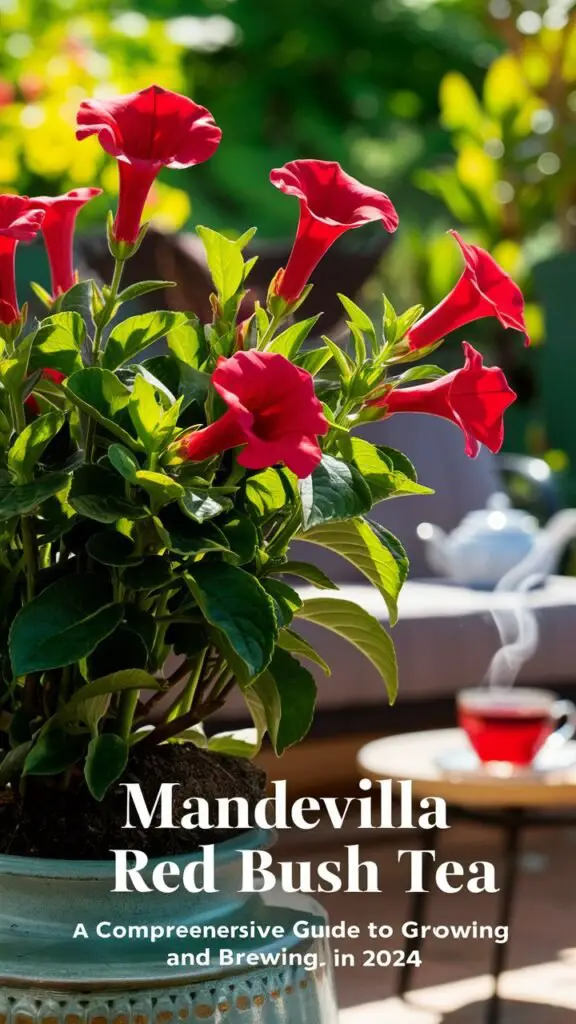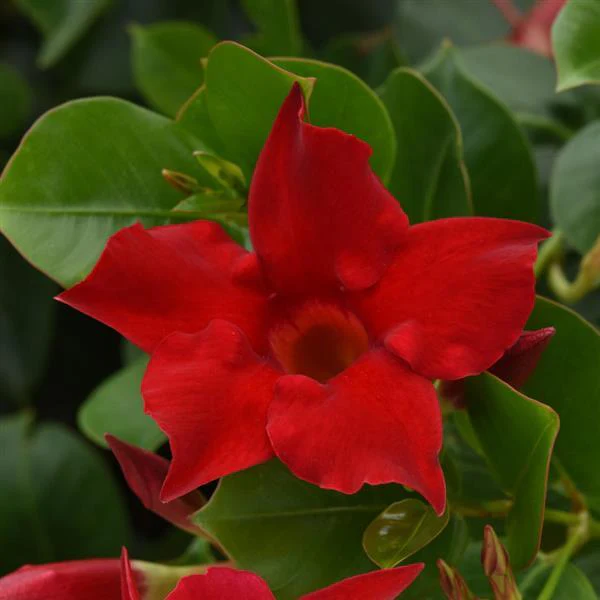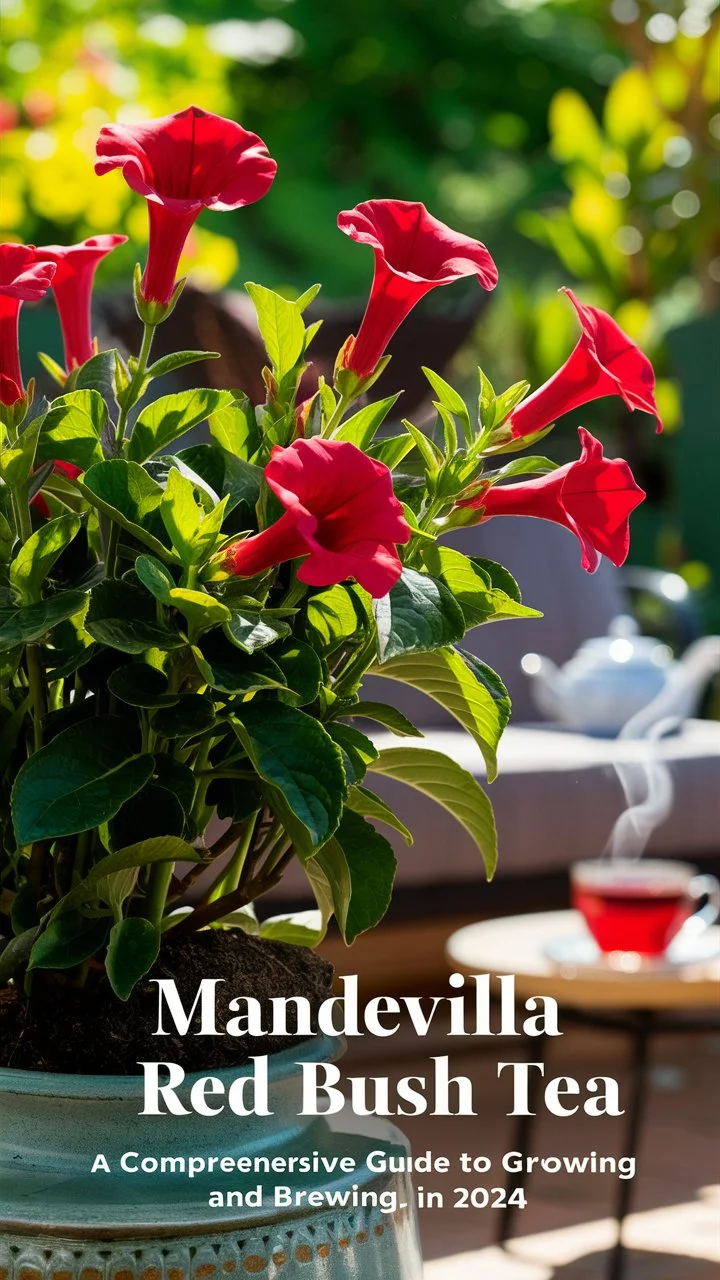Explore the health perks of Mandevilla Red Bush Tea, learn how to brew it, and get expert tips for growing Mandevilla plants. Perfect for tea fans and gardeners!

Have you ever sipped a tea that not only delights your taste buds but also boosts your health? Let me introduce you to Mandevilla Red Bush Tea, a hidden gem in the world of herbal infusions. I’m Ashley Scott, and with 10 years of gardening under my belt, I’ve grown plenty of plants—but few have surprised me as much as the Mandevilla. Not only does it brighten my garden with its vibrant flowers, but its leaves also make a delicious and healthful tea that I’ve come to love.
In this article, I’ll share everything I’ve discovered about Mandevilla Red Bush Tea—its origins, benefits, how to make it at home, and even tips for growing your own Mandevilla red plant. Whether you’re a tea enthusiast, a gardener, or both, this guide is packed with answers to your questions. Let’s dive in!
What is Mandevilla Red Bush Tea?

Mandevilla Red Bush Tea is an herbal infusion made from the dried leaves of the Mandevilla plant, a tropical vine famous for its stunning trumpet-shaped flowers and potential health perks. Native to warm regions like Central and South America, this plant caught my eye years ago for its beauty, but it was the tea that really won me over.
A Bit of History
The Mandevilla plant was named after Henry Mandeville, a British diplomat who stumbled upon it in Argentina in the 1800s. While it’s prized for its ornamental Mandevilla flower colors—think red, pink, white, and even the unique Mandevilla colors apricot—its leaves have quietly been used in traditional remedies. Today, Mandevilla Red Bush Tea is emerging as a caffeine-free, antioxidant-rich option that’s perfect for sipping any time of day.
What sets it apart? It’s got a mildly sweet, floral taste with earthy undertones—different from bold teas like rooibos or chamomile. I first tried it on a whim after harvesting some leaves from my garden, and I was hooked!
Benefits of Mandevilla Red Bush Tea
Why do I rave about Mandevilla Red Bush Tea? It’s not just the flavor—it’s the health benefits that keep me brewing it. Here’s what I’ve learned from my research and experience:
- Supports immune health: Packed with antioxidants and vitamin C, this tea helps your body fend off colds and infections. I’ve noticed I feel stronger during flu season when I sip it regularly.
- Promotes heart health: The flavonoids in Mandevilla leaves might lower blood pressure and protect cholesterol from damage, which is great news for your heart. (Check out Harvard Health for more on antioxidants!)
- Aids digestion: Its gentle astringent properties soothe bloating and indigestion—perfect after a big meal.
- Caffeine-free: If you’re like me and get jittery from caffeine, this tea is a calming alternative for evenings.
- Stress relief: I find it relaxing after a long day, thanks to compounds that may ease tension and promote better sleep.
These perks make Mandevilla Red Bush Tea a staple in my kitchen. It’s amazing how a plant I originally grew for its looks turned into a wellness boost!
How to Make Mandevilla Red Bush Tea
Making Mandevilla Red Bush Tea is a breeze, and I’ve fine-tuned a recipe that’s simple yet delicious. Here’s how I do it:
- Harvest or source leaves: If you’ve got a Mandevilla bush red in your yard, pick healthy, mature leaves. Otherwise, look for dried leaves online or at tea shops.
- Prep the leaves: For fresh leaves, wash them well and pat dry. If they’re dried, make sure they’re mold-free.
- Boil water: Heat water to about 200°F (93°C)—just shy of a full boil.
- Steep: Put 1-2 teaspoons of dried leaves (or a small handful of fresh ones) in a tea infuser or cup. Pour the hot water over them and steep for 5-10 minutes.
- Strain and sip: Remove the leaves and enjoy it plain or with a drizzle of honey.
The first time I made this tea, I was amazed at how easy it was. The leaves dried quickly on my kitchen counter, and the flavor was a lovely surprise—subtle yet satisfying. Pro tip: Only use leaves from plants free of pesticides or chemicals.
Potential Side Effects and Precautions
I’ve never had issues with Mandevilla Red Bush Tea, but it’s smart to be cautious with any new herbal drink. Here’s what I’ve found:
- Check with a doctor: If you’re pregnant, have health conditions, or take meds, consult a healthcare pro first.
- Allergies: Some folks might react to plants in the Apocynaceae family, though it’s rare.
- Pet safety: Good news—the Mandevilla plant isn’t poisonous to humans. But it can upset pets’ stomachs, so I keep mine out of reach of my curious cat.
Overall, it’s been smooth sailing for me, but I always say better safe than sorry!
Where to Buy Mandevilla Red Bush Tea
Not ready to grow your own Mandevilla red plant? No worries—you can still enjoy Mandevilla Red Bush Tea for sale. Here’s where I’d look:
- Specialty tea shops: Stores focusing on herbal blends might carry it.
- Online retailers: Sites like Amazon or Etsy often have unique teas.
- Farmers’ markets: Local vendors sometimes sell dried leaves or pre-made blends.
When buying Mandevilla Red Bush Tea for sale, I check reviews to ensure quality and sustainability. Or, if you’re feeling adventurous, grow your own—more on that next!
Growing Mandevilla Plants for Tea
As a gardener, I love that growing a Mandevilla tree (or vine, really) lets me enjoy both its beauty and its tea. Here’s how I do it:
Basic Growing Tips
- Sunlight: Mandevilla loves full sun—give it 6+ hours daily.
- Soil: Use well-drained soil. For Mandevilla care in pots, I swear by a good potting mix to keep roots happy.
- Watering: Water weekly, letting the soil dry slightly between sessions. In summer heat, I bump it to twice a week.
- Support: My vining Mandevilla red plant climbs a trellis, but mounding types stay bushy on their own.
Want more details? See my guide on Mandevilla Care in Pots at USA Garden Hub.
Winter and Indoor Care
In colder zones, Mandevilla plant care winter means bringing it indoors. I keep mine near a sunny window for Mandevilla care indoors, and it thrives. Check out Mandevilla Plant Care Winter for my full tips.
Harvesting Leaves
- When: Pick leaves in the morning after dew dries.
- How: Choose mature, healthy ones and dry them in a shaded, airy spot. I store mine in a jar for year-round tea.
Seeing those Mandevilla colors—red, pink, white, or apricot—in my garden while sipping homemade tea? That’s pure joy.
Conclusion
Mandevilla Red Bush Tea is a delightful blend of flavor, health, and gardening fun. From its immune-boosting antioxidants to its calming vibe, it’s a tea I can’t get enough of. Whether you buy it or grow your own Mandevilla red, I hope this guide inspires you to give it a try.
Have you tasted Mandevilla Red Bush Tea yet? Drop a comment below—I’d love to hear your thoughts! And if you’re growing Mandevilla, explore its stunning Mandevilla colors to make your garden pop.
FAQ
Q: Is Mandevilla Red Bush Tea safe?
A: Yes, for most people. Check with a doctor if you’re unsure.
Q: Can I grow Mandevilla indoors?
A: Definitely! It does well in pots with lots of light.
Q: What’s the taste like?
A: Think mild, sweet, and floral with an earthy twist.





2 Comments on “Mandevilla Red Bush Tea: A Hidden Gem for Tea Lovers and Gardeners”